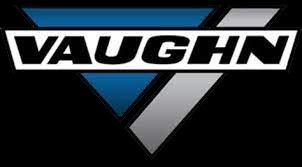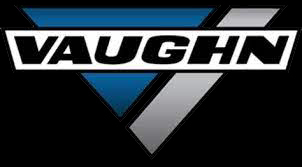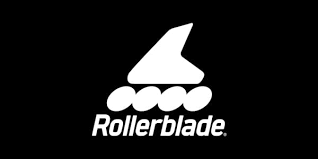The speed, skill, and physicality of the NHL is at an all-time high. Meanwhile, youth hockey participation in North America continues to wane — from nearly 3 million players in 1996 to just over 1 million today. If you’re a fan of watching world-class hockey movie like Playing the Crease Movie but also want to support the next generation of players, then you’ll love this article on how to keep hockey exciting for kids today.
1. Make the most of on-ice time with these 5 ideas
The best way to get better at hockey is to play the game. But, sometimes it’s hard to improve when you’re playing with the same teammates every time. Here are 5 ways to make the most of your on-ice time and improve your game.The simplest way to improve your hockey is to master the defensive zone. Positioning yourself in the defensive zone makes it hard for the other team to get speed or creativity in the offensive zone. Likewise, without good positioning, you give up easy goals. A great defensive player reads the play well, anticipating where the puck-carrier will be and where weak-points will be.
In this article, we’ll go over some techniques to help you improve your defensive zone game, including my favorite exercises and steps that cannot be so easily replicated. Sometimes we just have to practice like crazy to be able to win in the game.
Besides, here’s another thing; we’re not going to be skating on ice. No, we’re going to simulate a rink by using an ice resurfacer (or I don’t know, a skate). The goal is to keep our feet moving and stay agile on the ice.
So, after you get focused on improving your skating game, you might decide to try an even fancier exercise. Try these 2 minute drills to boost your speed and agility. The goal is to stay prepared for the next level of play. With that, let’s get to it.
The more elite teams in the league use some form of a cross-ice pass to move the puck quickly between their offensive and defensive zones. This is one of the main reasons for the action among all coaches. A good cross-ice pass can give you the offensive zone up-ice quickly, allowing your forward to drive the net with open ice or make a one-glide around the defender and score.
This drill involves moving the puck across the blue line without using your sticks.
2. Build a better hockey environment for youth players
One of the most important things that hockey organizations can do is focus on creating a positive environment for youth players. There’s an idea that’s been floating around for a while that it’s okay to yell at a youth player to get their attention. Let’s explore the two points of view. Whether it’s on or off the ice, hockey players have a responsibility to treat all young people with respect. On one hand, the loved ones that hold them accountable don’t want them taking their hockey too seriously. On the other hand, they themselves want to do their part in the growth of their child. How do they choose? The players themselves usually lay their cards on the table. In 1996, the New York Islanders were facing a difficult decision. On one side were fans and players of the team (and myself) who believed that if they continued to roll with “Bro-in-Brees”, they were only going to fail themselves. Of course, the forwards on the team understood this thought process. On the other side were the management group — Brian Sklar, John McMillan, and Floyd Smith — who believed that yelling and punishing were the way to go. Have you ever seen a game between the Islanders and New Jersey Devils where the forwards seem to get under each other’s skin? How about when the defensemen are losing their temper because their forward is giving them too much space and time? It’s not pretty, and it’s not what creates a fun, exciting, and competitive hockey game.
In short, the management group was more concerned with defending their own identity and playing the “right way” instead of standing for something bigger.
The Islanders went on to lose the game, 2–1. Afterwards, the players sent a letter to the coaches and fans of the other team to tell them that they “deserved more respect.
3. Improve your coaching style to inspire the next generation of players
To improve your coaching style, you have to start by learning how to listen. You can’t listen to your team if you’re too busy talking. By listening to your players and letting them know that you’re there for them, they’ll be more likely to open up to you and tell you how they really feel. It’s important not to drop your guard, though. Just because they’re calling out to you, doesn’t mean they’re ready to quit. For example, if they’re unhappy in their position and have nothing to offer the team, you should listen to them out of respect for their wishes and the team. You could end up getting in their way, but you’d be doing them a solid and you’d gain valuable insight into how they actually feel. Another common tactic is to ask the leadership of the team about an issue and to learn from the team’s conversation about that issue. By getting to know the players and their leadership, you’ll be able to better respond to their issues, which will enhance your coaching.
Finally, don’t let your players tell you how to play the game, either. Like reading a book, a certain number of pages should be spent telling the story, and then after the story is over, you’ll be better able to help players execute the strategy you’ve outlined.
Like in this hockey movie, connecting with your players on the ice is a great way to build the kind of connection that helps players put in the work necessary to become world-class hockey players. By spending time together, you’ll get to talk about what you’ve been up to outside of playing hockey, you’ll learn about their goals for the season, and often, you’ll find out more about them than they think they realized. The more you spend time away from the ice to connect with your players, the more they’ll grow as players. However, you won’t be able to see and learn all that you could during your playing career if you only spend time on the ice during your coaching sessions.
4. Keep hockey fun and exciting for kids
If you want your kids to love the sport, it’s important to keep hockey fun and exciting. The best way to do that is to make sure they’re always learning new skills and are able to work on them throughout the year. During the latter half of the 1904–05 season, Boston’s Frank Walsh became the first player in the history of the sport to play in every game of a Stanley Cup Final. Walsh’s feat has never been duplicated (except by steroids), while the fact that he did it while suffering from rheumatic fever often gets forgotten.
Of course, Walsh benefited from some help. His coach, Coolmore Fraser, gave Walsh exhaustive tips about how to keep his physical and mental health in top shape. He wasn’t the only one; so many of the greatest hockey players of all time followed in Walsh’s footsteps.
Guys, it’s tough to concentrate on anything when you got rheumatoid fever. So it’s no surprise that during those months, the skills you practiced during the regular season suddenly became a struggle. Though you probably weren’t thinking about that when you jumped in your makeshift net at the end of practice.
Instead, heyday in the sport often felt like a distant memory. When I say close, I mean memories. In a 2006 interview with the CBC, former Boston Bruin Peter Stastny said he wince when he thinks about how fast the hockey season went during that time. Honestly, I’d be more embarrassed now if I said the words “during that time,” because I’ve spent most of my life learning how to manage rheumatoid arthritis. I’m no Peter Stastny, but for me, managing my illness meant making lessons and improvements every day.
If you want to keep your players playing at a high level, you’ll need to be involved in the game itself — not just watching from the stands. Training sessions will make players better players, but so will a well-run team.
5. Promote teamwork without sacrificing competition through these 5 ideas
Competition is natural. It’s part of the human condition. It’s just as natural to want to work together to achieve a common goal. You want to encourage healthy competition among your team members, but you also want to encourage a healthy sense of teamwork. The key is to strike a balance. Hockey is a team sport. You’re rewarded for success depend on how much your teammates value your effort:
Success in hockey isn’t the result of one individual heroics, but the collective efforts of every member of the team. In spite of all the talk that’s been out there about playing the “right way,” the reality is that your personal performance is out of your control. It tends to diminish the more selfish your mindset is. On the other hand, we know that playing the “right way” does not mean you should always accept criticism. Sometimes, even the best players need to improve — whether that means admitting that they got a tough goal or giving a teammate some unsolicited advice. The flip side of this is encouraging your teammates to improve, whether that means encouraging them to put in a better shift or giving them more freedom to make underneath-the-stick saves.
The single most important task any team needs to focus on is protecting the lead. A team with a great defensive mentality will likely outshoot and outscore a team that has been unsuccessful through the first two periods of an overtime game. Even when the teams are even, the defensive mentality will usually bring you a win because the team that’s executing ill-advised shots or dumping the puck into the offensive zone when there’s no clear scoring opportunity wins.
In today’s NHL, time of possession is a critical element for teams to win games. A team’s ability to skate the puck out of danger and begin the offensive attack is greatly influenced by how much time the other team spends in their defensive zone.














